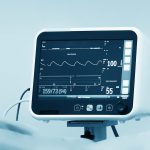Medical devices are regulated differently across the globe. Each country has mandated the requirements around what medical devices are, their classification rules, the obligations that need to be met to place medical devices on the market and the post-market requirements once commercialization has taken place. Many articles have been published on the need to balance safety and performance with timely access to innovation. Some of these publications go on to compare the strengths and weaknesses of various global regulatory systems. “All medical devices carry some level of risk and may, when in clinical use, suffer mechanical, electrical or biological failures, be damaged, may be used incorrectly or else experience issues which may result in death or serious deterioration of Patients health”. When these events occur they must be reported to the appropriate regulatory agencies in the region where they occurred. It is also a requirement for some of this information to be shared in other regions where the same device is placed on the market.
It is important to consider the aspects of a quality system (such as ISO 13485:2016) which allows the collection of appropriate information that will support compliance to those requirements. ISO 13485:2016 now includes a clause (8.2.3) on reporting applicable complaints to the affected regulatory authorities, which further emphasizes the need for manufacturers to have documented procedures to allow for to be made. If these processes are not clearly established, compliance to those regulatory requirements will not be possible.
The Importance of an effective Vigilance System
Meeting vigilance reporting regulatory requirements should be considered as one output of having an effective Quality System in place. Complaint and vigilance data can feed into a Post-Market Surveillance programme supporting the device’s Technical Documentation, such as the Clinical Evaluation and Risk Management, allowing for a continued assessment to be made that a device is safe and performing as anticipated. In addition, it can also assist in flagging performance issues with a device so that an assessment can be made whether the device needs to be re-designed, recalled, withdrawn or can help in confirming whether alternative/updated instructions for users are required to achieve the intended performance and the safe use of the device. Data from an effective vigilance system can feed into any Periodic Summary Reporting arrangements made with Regulatory Agencies, and finally, into Research and Development (R&D), allowing for considerations to be made when designing the next generation of device.
Information is available in each of the five countries versus the European Union is interesting to compare:
- Australia’s Database of Adverse Event Notifications (DAEN) has been publicly available since 2012 and is searchable by report number, date, manufacturer, sponsor, device name, device Global Medical Device Nomenclature (GMDN) or Australian Registry of Therapeutic Goods (ATRG) number. Incidents are assigned an event type code from ISO/TS 19218-1:2011 – Medical devices – Hierarchical coding structure for adverse events – Part 1: Event-type codes.
- US FDA’s Medical Device Reporting database was superseded by the Manufacturer and User Facility Device Experience (MAUDE) database which has been publically available since 1996. MAUDE is searchable by report number, date, manufacturer, device name, device class, event type or product problem. The Product Problems are divided into more than 1000 device problems and patient problems described by 3500A Code Manual.
- Japan and Brazil have publically available information on incidents available only in their local languages.
- The new MDR takes a step forward in improving access to vigilance information and market surveillance as a whole in Europe. The MDR wording includes reference to the European database on medical devices EUDAMED (Article 33). EUDAMED will aid transparency, as information will be made available, with varying access levels, to competent authorities, economic operators, notified bodies, sponsors, healthcare professionals and patients subsequently contributing to increased patient safety.
Conclusion:
Manufacturers need to be aware and understand vigilance reporting requirements of all of the jurisdictions that they operate under. Robust, well-documented complaint and vigilance reporting processes need to be in place not only to meet the regulatory requirements, but also to provide evidence to manufacturers that their medical device continues to operate as designed, is performing as anticipated, and remains state-of-the-art. Depending on countries in which manufacturers place devices on the market will determine the most stringent requirements to follow. Manufacturers should also consider that at the time of publication of this White Paper, the EUDAMED Database to support compliance to the MDR is under construction and is planned to go live in 2019. Manufacturers will still have an obligation to report under the MDR should the EUDAMED database not go live before the date of application in May 2020. This also applies to manufacturers placing devices on the market with a valid CE Certificate issued under the current Directives, and issued before the end of the 3-year transition period.
If you need assistance with Medical Devices Vigilance Reporting, feel free to reach out to MakroCare for guidance and support. Contact us today to learn more about our services.


